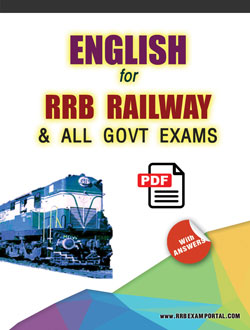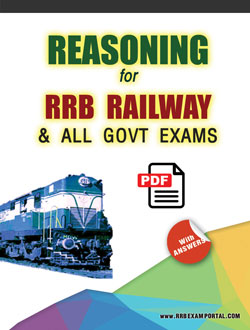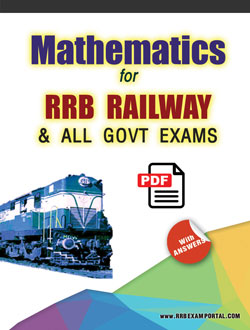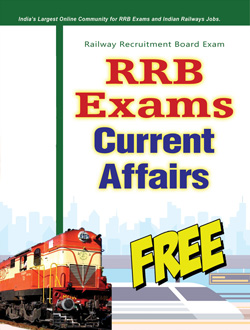Free Study Material For RRB Examination: English (Prepositions)

Free Study Material For RRB Examination
Subject : English (Prepositions)
Prepositions of Time
A number of prepositions may be used to denote time: from
Monday; after my return; during the night; till tomorrow; before the bell rings;
a quarter to ten.
In most cases, it is easy to decide which preposition to use. The following
prepositions, however, need special attention.
1. At, on, in
(a) At usually denotes a definite point of time but can also
be used for indefinite periods:
at 7 p.m.; at this moment; (Definite at midnight; point of time)
at the end of the class;
at night; at dawn; (indefinite at Durga Puja; at Diwali. periods)
(b) On is used with days and dates:
on Monday; on 1st May;
on the annual day; on a May afternoon.
(c) In is used with parts of the day, and with months, years,
seasons:
in the morning; in September;
in 2004; in winter.
(d) In is also used with the future tense to show the period
in which an action will happen:
in a week; in four hours.
(e) In and within. In means at the end of; within means
before the end of:
I shall be back in a week. (when a week is over)
I shall be back within a week. (before a week is over)
2. By
By refers to a point of future time and denotes the latest
time at which an action will be over:
The competition will be over by 6 p.m.
(It should be over before it is 6 p.m., but the latest time at which it can be
over is 6 p.m.)
They will have declared the result by tomorrow evening.
3. For
For is used with periods of time to show the duration of an
action. It is mostly used with perfect continuous tenses though it may be found
with other tenses as well:This discussion has been going on for two hours.
I have worked in this office for two years.
For may sometimes be omitted also:
I have been busy the whole morning. (for the whole morning)
4. Since
Since marks the point of time at which an action began. It is
used only if the action has continued till the time of speaking; hence it is
found with perfect continuous tenses. Unlike for, it can never be ommitted:
She has been teaching in this college since 2001.
A cool breeze has been blowing since morning.
5. From
From denotes the starting point of an action and is used in
all cases except when the action has continued till the moment of speaking. It
is almost invariably used with to or till:
The examination will be held from 8 a.m. to 11 a.m.
He was the Chief Minister of the state from 1999 to 2002.
6. At, in
(a) At has the idea of an exact point and is, therefore, used
with houses, villages, small towns. In has the idea of a larger area and is used
while speaking of bigger towns, states, countries, etc.:
at Karol Bagh in New Delhi;
at Ambala; in England;
at the end; in the middle.
(b) At conveys the idea of a general neighbourhood; in
conveys the idea of something contained:
We say at the table to take our lunch.
Please wait for me at the Regal PVR.
Turn left at the next crossing.
There are two Pepsi bottles in the refrigerator.
You will find the stapler in the drawer.
7. On, upon
On is used while speaking of things at rest; upon is used
with things in motion:
The file is on the table.
The dog sprang upon the table.
8. Above, over
Both above and over mean higher than. Sometimes we can use
either of them:
The flags waved over our heads.
The flags waved above our heads.
But over can also mean coverning, or vertically above:
My father put a blanket over me.
There is a fan exactly over the table.
9. Below, under
Both below and under mean lower than and sometimes we can use
either of them. But under means vertically below. It also has the idea of
contact:
There was a beautiful lake below us in the valley.
His shoes were lying under the table.
She put the keys of the wardrobe under her pillow.
10. Into
Into denotes movement towards the interior of something:
He jumped into the well.
One stream flows into another.
Figuratively: We have entered into an agreement to export handicrafts to some
European countries.
11. For
For is used to denote direction when the verb shows the
beginning of a movement:
The children leaves for the school at 7 a.m.
We shall soon set off for Mumbai.
12. Against
Against shows pressure or contact:
He threw the goods against the wall.
Prepositions of direction from. Most common among these are: from, off, out of:
13. From
From is used with the point of departure:
He brought these books from the market.
He had already gone from home.
14. Out of
It is the opposite of into. It means from the interior of:
He took a few books out of the almirah.




